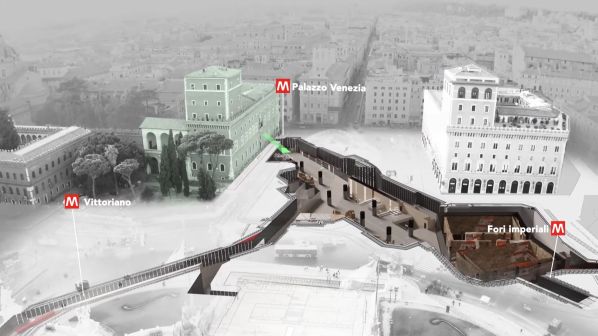CONSTRUCTION is now in full swing in the Italian capital on what the Metro CS consortium led by Webuild and Vianini Lavori describes as a “unique challenge, in terms of engineering, size, the importance of the historical-monumental context in which it is set, and its location in the heart of Rome.” The project is the construction of Piazza Venezia station which will become a central hub of Line C, Rome Metro’s first fully automated metro line.
A ceremony to mark the official start of construction of Piazza Venezia station was held in June ahead of the beginning of the main building activity.
Construction of the station’s foundations to a depth of 85m involves the installation of a system for a hydro-milling machine, consisting of a set of 14 silos each measuring 50m3. Site work, which has already begun in the centre of the square, will proceed with archaeological core drilling and soil pre-consolidation work in preparation for the construction of the station diaphragms. Relocation of underground utilities is underway and once the soils have been pre-treated, the installation of the hydro-mill is planned to start in mid-November.
Piazza Venezia station will have six underground levels and three entrances to Palazzo Venezia, Auditoria di Adriano, and by the Vittoriano. The station will be one of the so-called four “archaeo stations” on Line C, together with San Giovanni, Porta Metronia and Colosseo/Fori Imperiali, which will display the archaeological finds discovered during excavation.
Piazza Venezia is at the western end of the 3km Section T3 of Line C which will run via Colosseo/Fori Imperiali and Porta Metronia to San Giovanni. Section T3 is currently 91% complete and is scheduled to open in 2025. The first 18.5km section of Line C from Monte Compatri-Pantano to San Giovanni opened in stages between 2014 and 2018.
For more data on European metro projects, subscribe to IRJ Pro.

